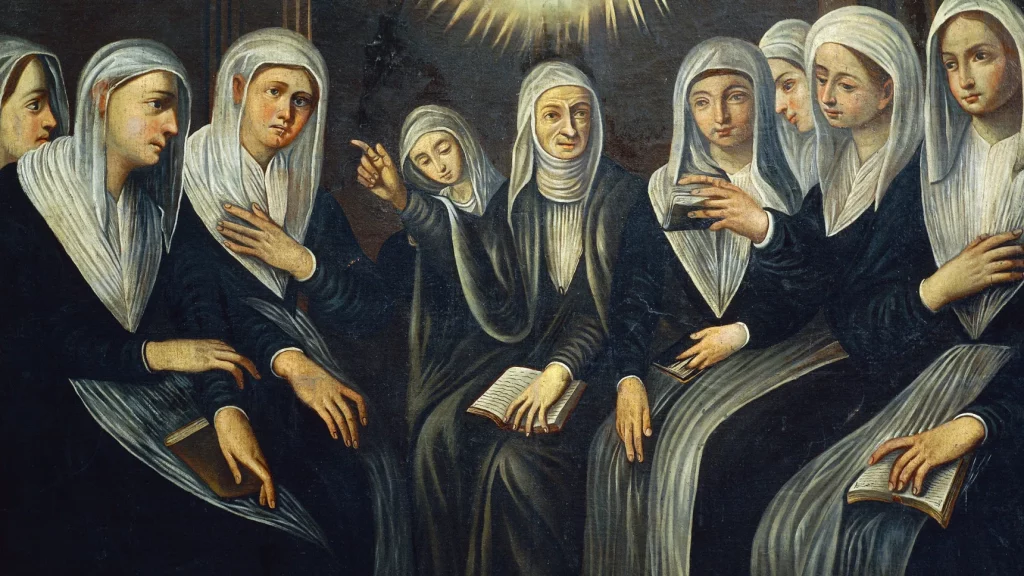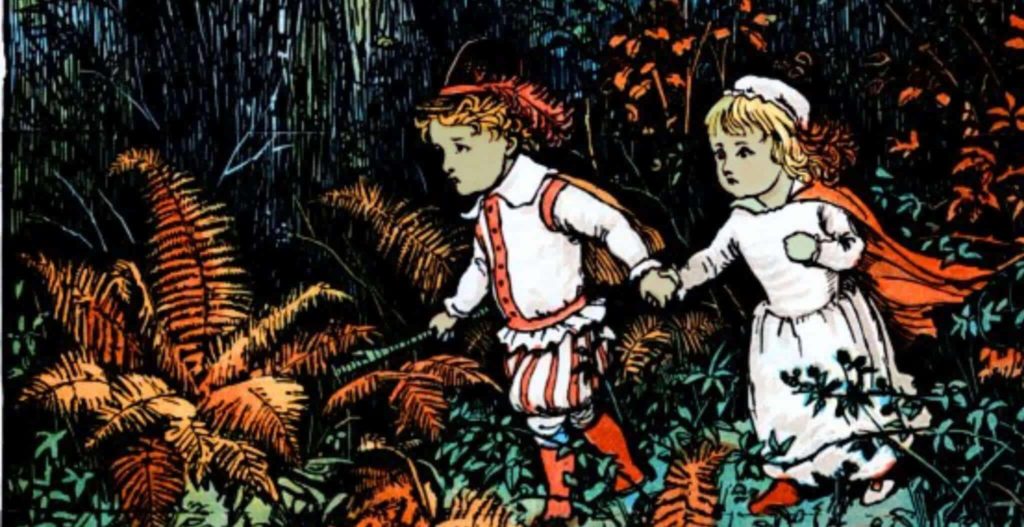Monasteries, priories, convents, and nunneries were a ubiquitous part of life in medieval Europe. No matter where one went in Western or Central Europe, they probably weren’t far from a religious house. Male religious orders such as the Benedictines, Dominicans, and Franciscans are the most well-known. But, curiously enough, some scholars estimate that the number of medieval nuns in Europe may have outnumbered the number of monks.
This makes sense when we think about it. After all, men who wanted to enter the church had many avenues they could go down if they wanted to. They could become a priest, a vicar, or even an administrator tied to the cathedral.
There was only one option for women: to become a nun. So what was life like for a medieval nun?

The Origins of Nunneries
The origins of the nunneries and convents in Europe are similar as those of the monks and monasteries. Monasticism first appeared in the Eastern Mediterranean in the fourth and fifth centuries when Christianity emerged as the Roman Empire’s dominant religion.
Hermits in Egypt and other places went out into the desert to live in solitude in much the same way Jesus had spent forty days there. In due course, this practice of hermeticism spread to Western Europe. It soon evolved into monasticism, whereby groups of religious zealots would live together in remote locations.
The Benedictines emerged as the first major religious order in medieval Europe in the sixth century after St Benedict of Nursia wrote a rulebook, the Rule of Saint Benedict, instructing monks on how to live.
The Rule was quickly followed by communities of female monks who became known as ‘nuns,’ a word derived from the Latin for an old woman. They lived in ‘convents,’ an Old French word from the Latin for convening, i.e., live together.
The Benedictine rule dominated the life of Europe’s convents throughout the Early Middle Ages. However, new religious orders emerged for medieval monks and nuns from the twelfth century.
One of the most prominent religious orders for women in the High Middle Ages and the medieval period was the Order of Poor Ladies.
These were established in the thirteenth century by St Clare of Assisi, a follower of St Francis of Assisi. He wrote a guidebook for women to follow, similar to the rules for the Franciscans. After her death, the order she founded became known as the Order of St Clare and then the Poor Clares.
St. Benedict’s Rule and the Medieval Nun
As with the male monks, female monasticism was based in medieval times on the regulations laid out in the sixth century by St Benedict in his Rule.
Even when new orders such as the Cistercians emerged in the twelfth century, these were effectively reinterpreting the earlier Rule rather than departing entirely from it.
Under the strictures of the Rule, nuns lived in convents, which were headed by an abbess, aided by several senior nuns or prioresses. The convent would be laid out around a cloister at the center of which there was an open space.
Nuns were often recruited from the younger daughters of the nobility, as the elder daughters were more beneficial for marriage alliances, but having a daughter rise to a position of prominence within the religious orders of a country like France often conferred power on a family.
Conversely, some women elected to join the convents themselves, as they could gain an education this way. It was one of the few ways a woman could avoid coming under the control of the male head of a household if she married or remained in her father’s house.
Life in the Convent for a Medieval Nun
Daily life for a nun was repetitive. It was largely divided into different sessions of scripture reading and prayer, mostly for the saving of the souls of the lay community, members of which would contribute to the convent for the nuns to pray for them and their families.
Mass had to be solemnized by male priests, who visited the convent nearly daily. Reading consisted of the Bible, theological works, and compendiums of prayers and holy texts.
Many convents developed extensive libraries, and some of these had a wider cultural role to play for the community. Medieval nuns, like monks, were expected to dress simply and to reject worldly goods and pleasures. Veils were worn to signify the nun’s position as a ‘Bride of Christ,’ and nuns took a vow of celibacy.
In theory, the nuns had limited contact with the outside world. Still, because the nuns performed many roles in the community, from praying for the souls of local people to dispensing alms and charity, there were few convents where nuns were strictly cloistered.
Beyond prayer, reading, and the dispensing of charity, nuns in the Middle Ages engaged in needlework, embroidered robes, and other types of clothes for church services.
These were often distributed as part of their charitable activities as well. The day was strictly regimented, with the Rule of Saint Benedict and subsequent texts outlining an almost military order to the day where one rose, prayed immediately, ate at certain designated times, and then prayed at two or three-hour intervals until the day was at an end. Then, when they arose the next day, they did it all over again.
Who Were the Most Famous Nuns in the Middle Ages?
Many medieval nuns became extremely well-known and respected figures across Europe. For instance, Ealhswith, the wife of King Alfred the Great of England, founded the convent of St Mary’s in Winchester around 900 and became a nun there in her final years.
Catherine of Vadstena was a Swedish noblewoman who became the head of the Brigittine convent in her native Sweden in the fourteenth century. She was later made a saint.
However, none was as revered as Hildegard of Bingen. She was a member of the Benedictine religious order in the twelfth century and a polymath who worked on various aspects of theology, music, and medicine. For instance, in two works she composed, entitled the Physica and Cauae et Curae, she provided detailed accounts of how she believed the human body worked and the causes of many common ailments.
She also offered folk remedies for many of these, employing a vast array of herbs and other ingredients. Unfortunately, many of these alleged medicines would have been ineffective.
Still, some poultices include an array of effective therapeutic drugs and herbs such as sage, lavender, and hay which have some medical efficacy. Hildegard eventually became the abbess of the convent of Bingen in the Rhineland and was sanctified later, highlighting the recognition some nuns could achieve in medieval times.

